History of the Cleveland Area Business
Where are We?
SBA Certificate Of Competency
Multiple Conservation Services Center
Technical Conservation Services for Outdoor Sculpture, Fountains, Monuments, Mosaics, Architectural Features, Military and Industrial Artifacts
History of Art Conservation in Oberlin, Ohio
History of the Cleveland Area Art Conservation Business
In 1989, art conservation professionals Robert Lodge and Gina McKay Lodge established the art conservation firm McKay Lodge Fine Arts Conservation Laboratory, Inc. on their 50 acre farm property located 4 miles from downtown Oberlin. Together, they commenced practice in a new, purpose built 2,600 square foot building designed for paper and painting conservation. The art conservation services company incorporated in January 1990. In the decades following incorporation, this art conservation center has grown phenomenally in scale, facility and services to a diverse and highly regarded awards winning national resource for art conservation services in many disciplines, employing many conservators each with a specialty expertise. The success of this Cleveland area arts conservation services company has been principally due to the exceptional expertise of its highly regarded individual conservators, which we are proud to present in this website, as well as to its responsiveness to its clients, and its affordable fees.
The company now operates from a large campus of three principal buildings with substantial outside work areas and truck (semi-tractor trailer) access and a fourth storage building, all comprising the state-registered Ohio Conservation Center.
Company founding art conservators Robert Lodge and Gina McKay Lodge have been professionals in art conservation in Oberlin, Ohio for over 36 years, since 1982 and 1983 respectively, to the present. At the Intermuseum Conservation Laboratory (ICA) in Oberlin, Robert served as ICA’s Conservator of Modern Art and as Acting Head of Paintings Conservation. Gina served as ICA’s Conservator of Paper and Acting Head of Paper Conservation.
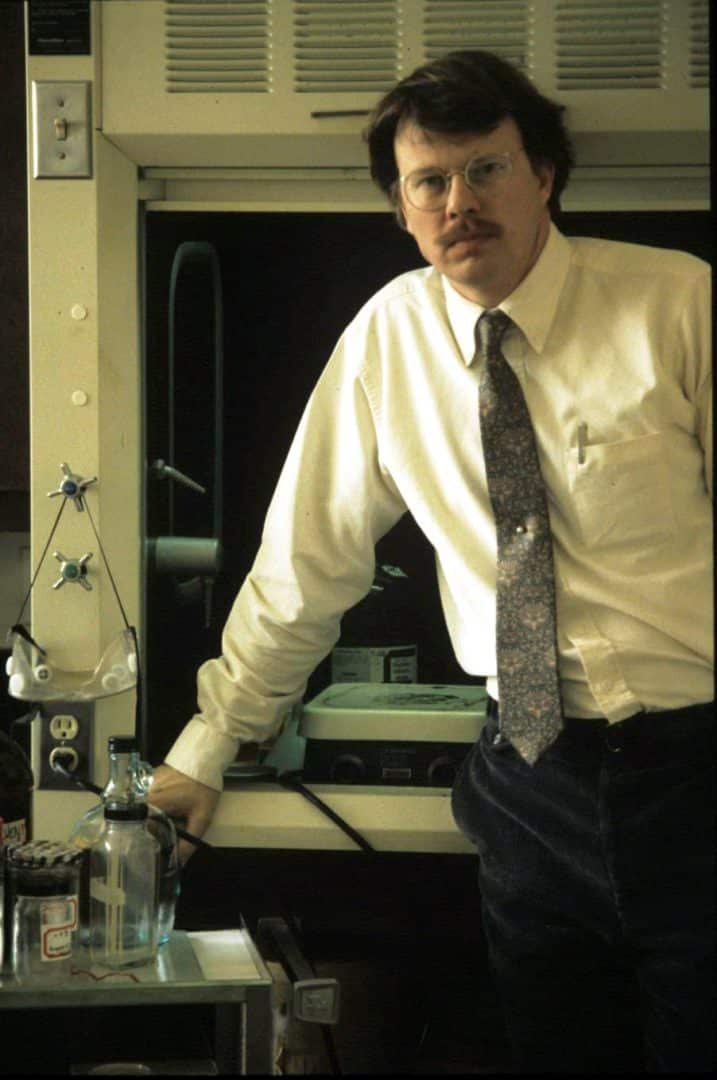

Robert Lodge and Gina McKay Lodge established the McKay Lodge art conservation company after leaving their positions of approximately six years each at the Intermuseum Conservation Laboratory of the Intermuseum Conservation Association (ICA), then a regional art conservation center once located in the small town of Oberlin adjacent to the Allen Memorial Art Museum at Oberlin College.
The goal of their new company was to duplicate the art conservation services, research and educational programs of a regional conservation center but entirely through self-funding from earned services revenue – eliminating the dependency on grants and the expenses of the staffing and time to solicit such outside funding. Through hard work, success through respect earned for its high quality and efficient services, and through the high volume of services that its reputation has made possible, it has achieved that goal.
The scope of services, facilities, and diversity of the conservator staff expertise have long ago far surpassed those of the not-for-profit organization they left behind. Average gross revenue purely from art conservation services rendered over the five years of 2012-2016 has nearly reached 2 million dollars ($1,959,410.60), 2017 gross revenue strictly from provided conservation services will exceed 3 million dollars, the average number of conservation projects during that five year period exceeded 350, the number of full-time staff has grown to twelve (12), and the company sees ahead only increased capabilities in providing paper conservation, paintings conservation, objects conservation and sculpture conservation. The largest activity of the company is the conservation of outdoor sculpture. Our outdoor sculpture conservation projects take place all over the United States, largely through contracts with the U.S. General Services Administration (GSA).
The conservation of paintings, objects and art or documents on paper to Cleveland and the larger region remains a core service area, traditional to the company, but the greater growth it sees for itself is in providing specialty art conservation services for outdoor sculpture and for the highly diverse-in-materials Public Art collections nationally. The company is a participant in the Public Arts Network (Americans for the Arts). To that end the company invests in continuing education of its staff in a variety of industries including concrete, metals, and industrial coatings. The company also can afford to invest heavily in new equipment, some used in emerging conservation technologies, to the benefit of its clients.
A significant part of the company’s mission beyond treatment services is self-funded ongoing research by staff, dissemination of information to the public, education of our clients, training through student internship opportunities and pro bono services, donated services where warranted, as well as financial support in the arts. Service revenue profits are fully sufficient for the purchase of new equipment and for all general operating expenses. These are all possible simply through earned revenue from conservation services. No grants are necessary. McKay Lodge Conservation Laboratory participates as a good corporate citizen in the arts though annual charitable giving to various not-for-profit arts and historical organizations.
Robert and Gina also founded Oberlin Conservation Associates, LLC solely to employ conservators for lease to McKay Lodge, Inc. as its clerical and professional staff. Both companies are owned by the The Robert G. Lodge Trust while the Ohio Conservation Center facilities and land are owned by the Gina McKay Lodge Trust. These trusts have succession plans and financing to assure the survival and continuance of company art conservation activities and charitable giving in the arts beyond the lifetimes of the McKay Lodge Conservation Laboratory founders.
The company works with a total core staff of twelve (12) staff members, of which eight (8) are specialty conservators, three (3) conservation assistants and one (1) officer manager. Of the twelve staff members, eleven are the sole Members of Oberlin Conservation Associates, LLC (OCA), with Robert G. Lodge as the OCA Manager; these Members form the dedicated staff of McKay Lodge Conservation Laboratory, Inc. and work under an Employee Services Agreement (the “Agreement”) to provide professional services under the direct control of McKay Lodge Conservation Laboratory, and its president Robert G. Lodge, as its leased “employees,” with McKay Lodge, Inc. providing all tools, all materials, all expenses, all direction and bearing all responsibilities for the OCA Members’ work at McKay Lodge, Inc. as if the OCA Members were the same as “employees” of McKay Lodge, Inc. according to the Agreement, including billings for services and receipts for services provided. Oberlin Conservation Associates, LLC (Robert G. Lodge, Manager) and McKay Lodge Conservation Laboratory, Inc. (Robert G. Lodge, President) are joined under the Agreement and one shall not be construed to be subcontracted to another.
In addition, the company is a general contractor, accomplishing some of its larger projects through coordinating subcontracted trades and professionals beyond those of OCA.
Where Are We?
Our buildings comprise a large campus – a portion of a 50-acre farm 4 miles north of the small college town of Oberlin, Ohio and one hour or less drive from downtown Cleveland. For 30 years (since 1990) this has been an incredible concentration of art conservation for the City of Cleveland, Northeast Ohio, and Ohio region. It has also been a national center for art conservation through various government contracts.
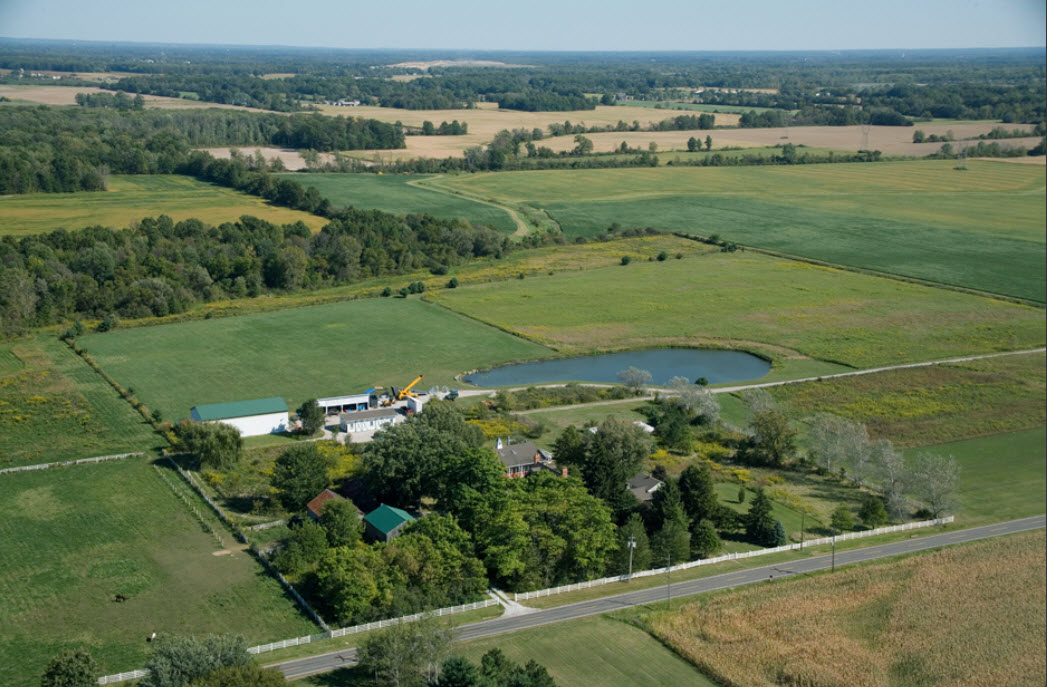
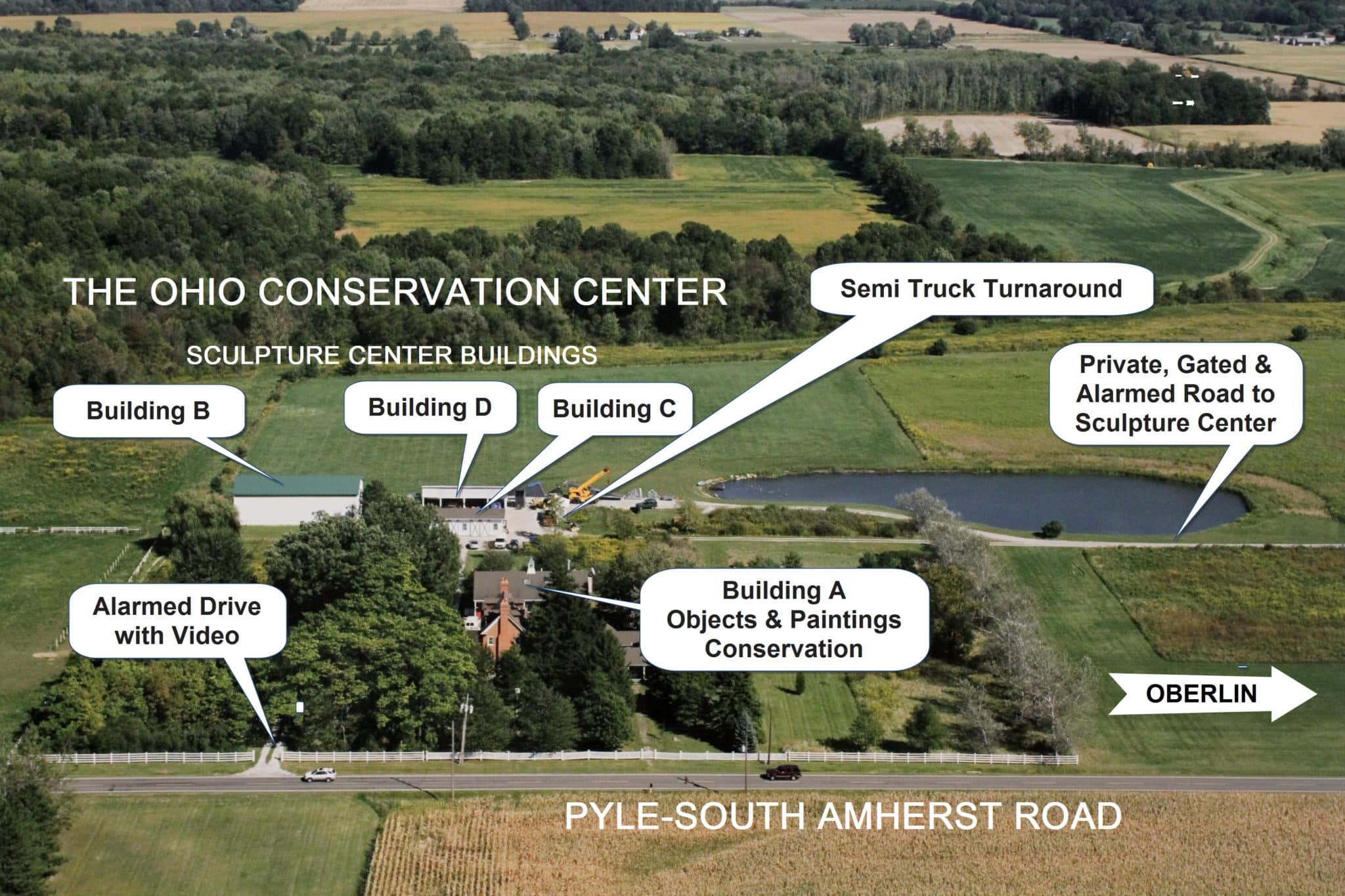
SBA Certificate of Competency
The company received in 2005 a Certificate of Competency from the U.S. Small Business Administration (Case: COC-05-22183) allowing it to qualify for a large dollar amount federal contract.
The SBA Certificate of Competency is only applicable as a qualification determination for a specific large federal contract. We are proud to have passed the extremely thorough and broad scrutiny (defined below) that the SBA implemented in 2005. We leaped a very high hurdle then, and certainly have only improved since.
The requirement is stated in the following Federal Acquisition Requirement (FAR):
FAR Subpart 19.6—Certificates of Competency and Determinations of Responsibility:
(a) A Certificate of Competency (COC) is the certificate issued by the Small Business Administration (SBA) stating that the holder is responsible (with respect to all elements of responsibility, including, but not limited to, capability, competency, capacity, credit, integrity, perseverance, tenacity, and limitations on subcontracting) for the purpose of receiving and performing a specific Government contract.
(b) The COC program empowers the Small Business Administration (SBA) to certify to Government contracting officers as to all elements of responsibility of any small business concern to receive and perform a specific Government contract. The COC program does not extend to questions concerning regulatory requirements imposed and enforced by other Federal agencies.
Multiple Conservation Services Center
During the previous 30 years of providing conservation services, the company has retained its initial focus on paper conservation, paintings conservation for regional museum and institutional fine arts collections.
Yet over time, there has come a growing involvement in contract conservation for federal, state and local government collections. With additions of professional staff and substantial expansion of the facilities and equipment, it grew to be especially active and known in the conservation of architectural features, wall paintings and murals, mosaics, sculpture, outdoor sculpture, public art, monuments, metal artifacts and objects, and modern and historic fountains. Most of these latter services take place on location at various institutions and sites all over the United States.
Conservation Services in Outdoor Sculpture, Fountains, Monuments, Mosaics, Architectural Features
Our company offers a comprehensive list of conservation services that can be completed on-site anywhere in the United States, or at our lab facilities located in the Greater Cleveland Area. Our conservators can travel to perform conservation assessments, CAP/MAP surveys, and treatments.
Our well-equipped shops and highly-trained staff allow us to provide specialty services including but not limited to:
- Industrial Coatings Application, Industrial Coatings Inspection, and Specification Writing
- In-house PPG automotive painting center with a computerized mixing station and fully stocked color mixing bank and a large spray containment for sculptures up to 22 feet high
- Bronze and Other Metal Surface Preparation, Abrasive Blasting, Dry Ice Blasting, and Cleaning
- Bronze patination, application and bronze casting
- Mechanical Repairs such as motors, bearing replacements, lighting
- Sheet metal, metalworking, welding and soldering
- Stainless Steel corrosion removal and repair
- Fountain construction, pool repair, pool liner installation, seasonal fountain maintenance, operation manual production
- 15-ton crane and 12,000 lb capacity Cat telehandler for loading and delivering artwork
- Art Installation, art removal, and art rigging
- Mosaic and Tile Repair and Relocation
- Concrete specifications, concrete coloring and coating, mortar, and concrete demolition
- Stone cleaning including laser cleaning, chemical cleaning, and micro-abrasive cleaning
- Stone cutting and carving and stone lettering, stone repair and consolidation
Safety
Our staff maintains a knowledge of OSHA safety regulations. We have in place ready to make applicable to specific locations a Space-Specific Written Compliance Program for Permit-Required Confined Spaces and fully meet 29CFR1910.146.
Every field staff member has been trained in Scaffolding and Fall Protection in 29CFR1926.450(L) and in 29CFR1926.500(M).
Every field staff member is also trained for the use of aerial lift equipment and they are capable in the operation of fork lifts and telehandlers.
Other Shop Services and Equipment
-
- Operation of oxy-acetylene, arc welding, T.I.G., M.I.G. equipment
- lead welding
- plasma cutters
- natural gas and compressed air torches
- high temperature welding
- hand forge welding
- soldering, riveting, crimping
- hot and cold forging and raising, stretching methods
- wire drawing (mechanical and by hand)
- rolling mill operation for sheet metal, tempering, roping, fluting, annealing, inlay
- engraving
- planishing
- burnishing by hand and with granular metallic and diamond oxides
- cutting, drilling, lapping and polishing
- use of acids and non-corrosive dry acid compounds
- drill press operation
- mill and lathe operation
- rotary stationary and portable saws and sanders
- belt sanders
- belt saws
- all common hand metal, wood and stone working tools
- power shears and sheet metal saws and bending devices
- compressed air grinders
- use of grinding head burrs, bits and buffs
- gravity, pressure and vacuum casting methods
- foundry operation
- mold making
- wax work
- gating, investment and shell mold fabrication, pouring, chasing and patination
- gilding
- FRP (fiber-reinforced polymer) lay-ups, molding, repairs and painting
- carpentry; masonry techniques
- standard plumbing (cutting, threading, sweating); joinery
- extensive knowledge and applications of adhesive and abrasive products
- basic AC-DC circuitry diagnoses and repairs
- armoring
- pattern development
- plastics processing and fabrication
- kiln building and operation
- empirical and batch formula mathematics
- assembly, maintenance and repair for gas, wood, and electrically fired equipment
- industrial spraying equipment for painting, abrasive blasting, cleaning
History of Art Conservation in Oberlin: McKay Lodge Art Conservation Laboratory, Inc. and the Intermuseum Conservation Laboratory (ICA)
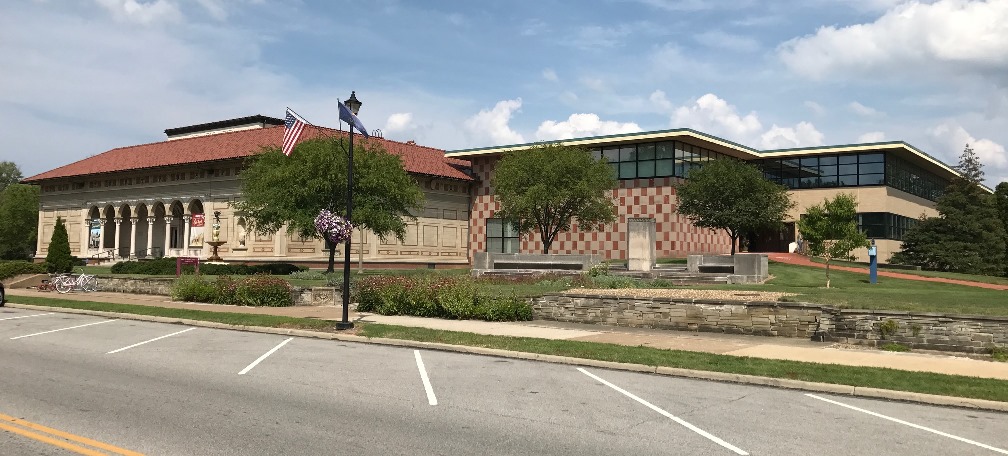
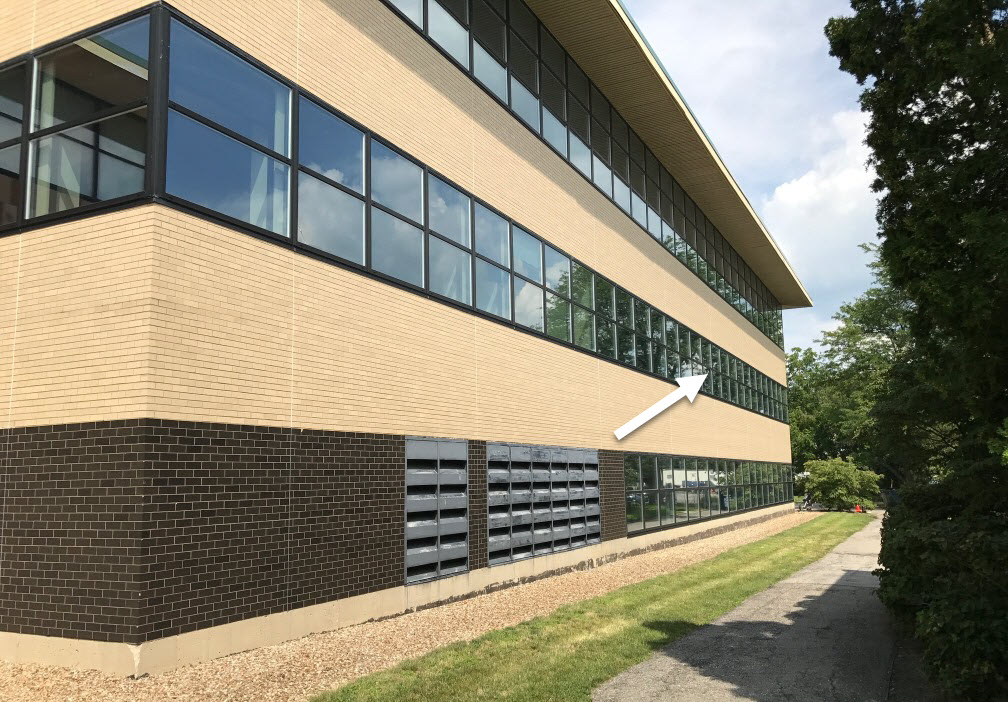
The little town Oberlin, Ohio (not shy of many “firsts”) has been an important host to the modern profession of art conservation for the past 64 years, since 1953, and continuing in that role today through McKay Lodge Conservation Laboratory, Inc.
Like a missionary outpost in the provinces, it was the “first” leap out into the United States of the principles and practices of the conservation of art that had been largely contained within the old eastern museum institutions such as the Fogg Art Museum of Harvard University, the Brooklyn Museum of Art, and both the Freer Gallery of Art and the National Gallery of Washington, DC, starting in the 1920’s. There and then, particularly at the Fogg Art Museum, modern conservation was developed as a merging of the work of restoration with the goals and ethics of preservation and applied to the care of museum collections. Much of the practices, the secrets-holding and the bizarre materials of “restorers” of past times had been abolished. Science was infiltrating the work. Research became essential to practice.
The principle early eastern region developers of modern art conservation include:
Edward Waldo Forbes, director of the Fogg Art Museum 1909-1944.
Rutherford John Gettens, chemist at the Fogg Art Museum since 1928; Chief of Museum Technical Research at the Fogg from 1949; established the Technical Library at the Freer Gallery of Art in Washington, DC in 1951; appointed head curator of conservation there in 1961; retired in 1968 and continued consulting until his death in 1974.
George L. Stout, graduated from Harvard University in 1926 and became a conservator and lecturer at the Fogg Art Museum in 1926; became the head of conservation there in 1933 and held that position until 1947. Interestingly, George Stout was one of the “Monuments Men” (Twelfth Army Group, Monuments, Fine Arts and Archives section), his role fictionally played by actor George Clooney in the 2014 film The Monuments Men.
Richard D. Buck, Harvard graduate 1926 and a student of the new conservation classes at Harvard University and the Fogg Art Museum; became a conservator of the Fogg Art Museum in 1937; held the Office of Conservator at the Fogg from 1949
The “missionary” whose work brought the message of modern art conservation to Oberlin was Richard D. Buck, the recipient of the knowledge of modern conservation taught at Harvard and the Fogg Art Museum. He was one of several with such knowledge who dispersed in the early 1950’s when there were difficulties at the Fogg Art Museum.
Late in 1951, five museums in the Midwestern United States held a conference at the Albright-Knox Art Gallery in Buffalo, New York to discuss joining together to share an art conservation facility and a conservator to serve their collection as none of the participants were in a position to maintain their own. The group engaged Richard Buck from the Fogg Art Museum as consultant.
The original group of five participants and their museums were:
Edgar Schenck, Albright-Knox Gallery,
Lee Malone, Columbus Gallery of Fine Arts (now the Columbus Museum of Art),
Wilbur Peat, John Herron Art Institute of Indianapolis (now The Indianapolis Museum of Art),
Charles P. Parkhurst, Allen Memorial Art Museum,
Otto Wittman, Jr., The Toledo Museum of Art.
The Davenport Municipal Art Gallery (later the Davenport Museum of Art) joined shortly later forming the sixth founding members of what would become a conservation consortium.
In 1952, Oberlin College’s Allen Memorial Art Museum, one of the six in the consortium, offered space in its art department building behind the museum as an initial conservation facility with Richard Buck as the appointed conservator who would serve in that capacity for over the next 20 years (1952-1972). The location in Oberlin was rather geographically central to the group. The space occupied was what is now the school’s print studio. Work on the consortium’s collections began in that same year, 1952, and included condition surveys to help sort out the museum’s priority needs.
On February, 4, 1953, the consortium incorporated in Ohio as the Intermuseum Conservation Association and named its conservation facility in Oberlin as the Intermuseum Conservation Laboratory, ever since simply called the “ICA.”
The objectives of ICA, the Intermuseum Conservation Association were initially entirely educational and scientific and in 1954 on that basis and stated in its charter the organization was made exempt from Federal Income Tax as a “non-profit-making educational and scientific institution.”
Eventually a distinction developed between grant-funded educational programs and initiatives on the one hand, and services and their revenue on the other, with the latter divided into member and non-member services. Oberlin-based ICA organization grew by providing services outside of its membership. By 1955 one fifth of its service income was derived from “non-member” service revenue.
More institutions were added to the collaboration over the years, up until a peak in 1986:
1954 Cranbrook Academy of Art joins
1954 Minneapolis Institute of Arts joins
1954 Munson-Williams Proctor Institute joins
1958 Memorial Art Gallery joins.
1960 Cleveland Museum of Art joins
1965 Dayton Art Institute joins
1966 University of Michigan Museum of Art joins
1968 Taft Museum joins
1972 Flint Institute of Art joins
1974 J.B. Speed Art Museum joins
1975 Milwaukee Art Museum joins
1977 University of Kentucky Art Museum joins
1978 Stan Hywet Hall and Gardens joins
1979 Snite Museum of Art joins
1982 Akron Art Museum joins
1982 Butler Institute of American Art joins
1982 Kentucky Historical Society joins
1982 Museum of Art of the Carnegie Institute joins
1983 Ball State University Art Gallery joins
1983 Kentucky Museum of Western Kentucky University joins
1984 Ohio Historical Society joins
The field of conservation has changed drastically since that peak in 1986. Some of the members established their own in-house conservation facilities with staff and left the association. Others turned, instead, for education and services needs to the growing numbers of private practices, some now larger in capacity than the ICA of that time, such as the Chicago Conservation Center and McKay Lodge Conservation Laboratory. Available services from privately owned and operated centers has mushroomed.
In 1956, Richard Buck published “An Experiment in Co-operative Conservation” Studies in Conservation, Vol. II, April. And in 1972 Richard Buck left the Intermuseum Conservation Laboratory as its director and established a second model of collaborative conservation in Balboa, San Diego, California in 1975. Based on these, the National Endowment for the Arts became instrumental in funding the start-ups of many other such centers throughout the United States, which became known as Regional Conservation Centers; as of 2017, there were 14 regional centers in an alliance.
Other milestones in Oberlin associated with the Intermuseum Conservation Association were:
From 1970-1978 Oberlin College offered a Master’s Degree in art conservation using the ICA facilities and staff. This program ended when it was deemed to be interfering with ICA’s commitment of services to its members.
1974 construction of a new wing of the Allen Memorial Art Museum to its south gave a new home to the ICA facilities. The location of the paintings and paper conservation studios are marked with an arrow in the pictures above. ICA raised $520,000 for the effort in exchange for 4,800 square feet of occupancy rent-free on a long-term lease, less any maintenance expenses.
The new ICA spaces included an office, a paintings conservation studio, and microscopy room, a paper conservation studio, a photography and radiography studio with darkroom, an employee’s desks room and library, and a spray booth.
The Intermuseum Conservation Laboratory of the Intermuseum Conservation Association existed in Oberlin, Ohio from 1953 to 2003. It subsequently relocated as an organization to Cleveland, Ohio.
From 1990 to 2003, for 13 years, the Intermuseum Conservation Laboratory and McKay Lodge Conservation Laboratory co-existed in the Oberlin area, one being a non-profit center only able to thrive on outside grant funding, and the other, McKay Lodge Conservation Laboratory, being a privately owned and financially independent on services revenue alone, sufficiently so to duplicate the grant supported educational work of its non-profit neighbor and provide annual philanthropic support to the arts as a good corporate citizen. One is a taker. One is a giver. Conservation services organizations have changed since the inception of these in 1953.
McKay Lodge Conservation Laboratory has remained in the Oberlin area to carry on the Oberlin art conservation tradition from 1990 and continuing through the present (2020) indefinitely.
